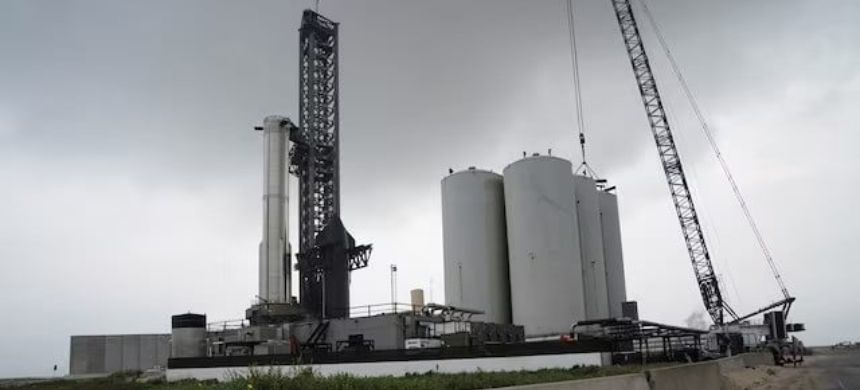SpaceX is exploring the possibility of landing and recovering one of its Starship rockets off the coast of Australia, marking a potential expansion of its operations in the region. This move could align with increasing US-Australian security cooperation as part of the AUKUS alliance, which includes the US, Australia, and Britain, aimed at countering China’s influence.
The plan involves launching a Starship rocket from SpaceX’s Texas facility, landing it in the sea near Australia, and then recovering it on Australian soil. This would require adjustments to US export controls on advanced space technologies bound for Australia.
Recent discussions between SpaceX, US officials, and the Australian Space Agency have focused on overcoming regulatory challenges related to recovering a Starship booster in a foreign country. The timing of any potential test landings remains uncertain, as these talks are ongoing.
Also Read: SpaceX Sends 20 Starlink Internet Satellites Into Orbit
If successful, this initiative could pave the way for more significant SpaceX operations in Australia, including possible future launches from the continent or land-based recoveries of Starship boosters. This is similar to SpaceX’s approach with its Falcon 9 rocket, which underwent ocean-based test landings before transitioning to land-based touchdowns.
The Starship rocket, standing at 400 feet (120 meters) tall, is designed for full reusability and aims to perform tasks such as launching satellites, landing astronauts on the Moon, and potentially delivering military cargo globally within 90 minutes.
SpaceX’s June test flight of Starship, which ended with a controlled splashdown in the Indian Ocean and a successful landing of its Super Heavy booster in the Gulf of Mexico, was a significant milestone. This test is seen as a critical step towards the broader goals of rapid, point-to-point delivery of cargo and further demonstrations of Starship’s capabilities.
The proposed test landings off Australia’s coast could further demonstrate the feasibility of using Starship for rapid global deliveries, leveraging its high-speed reentry and orbital velocity to significantly reduce cargo delivery times compared to traditional aircraft.











